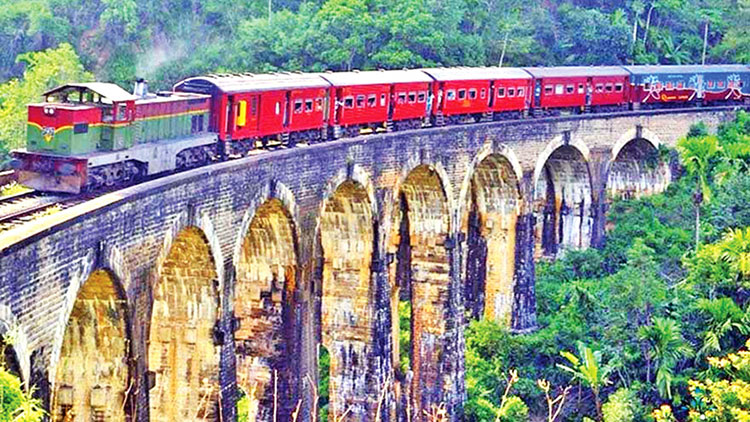‘Railway observation saloons then and now’:A response
While I was reading Dr B. J. C. Perera’s article, Railway Observation Saloons then and now, about the deterioration of railway service, my thoughts went back to the late 1950s, when I served the then known Ceylon Government Railways (CGR) for a few wonderful years. There were no Observation Saloons, but Restaurant Cars, run by Victoria caterers. The floor was carpeted, and the seats were covered with clean white linen and so were the tables. The stewards wore clean white uniform and were very courteous. One could enjoy the beautiful scenery, while sipping chilled beer or having breakfast.
Night trains had sleeping berths with clean white sheets and attendants. That was the situation a few years after the Britishers left and during the tenure of legendary General Manager B. D. Rampala.
The railway stations were periodically colour-washed. The toilets were frequently cleaned. There were flower-beds well maintained and above all the Station Masters were in crisp white uniform with the peak-cap and his inseparable whistle which they blew while handing over the tablets for the engine drivers after inspecting the ‘points’ the signalman had set the rails in the correct position to join the main line.
Legendary CGR GM B. D. Rampala
As I was attached to the Way and Works Department of the CGR, I saw how dedicatedly the District Engineers and the field staff worked, not to mention the kangany and labourers who worked under trying weather conditions, especially along the upcountry line. Passing Nawalapitiya, one could see wild daisies on either side of the track. Patrolmen, walking the distances assigned to them, greasing the rails, and the spanner men, with their tools, tightening loose joints. That was why there were no bumpy train rides. Annual re-sleepering and re-railing programmes were prepared by the District Engineer after inspecting the track with Foremen Platelayers and those programmes were strictly followed and completed on time. I trolled from Nanu Oya to Badulla to prepare those programmes. I had the pleasure of witnessing how they carried out the work manually. It looked like a festive event when all labour gangs of the Foreman’s division got together with the wives bringing lunch to be shared by all. Bottles of arrack were emptied while work was in progress with the Foreman turning a blind eye, knowing the heavy work being carried out; workers had to carry thirty-foot rails and wooden sleepers. They completed work ahead of schedule but the Foremen kept the track closed or allowed trains at restricted speeds for workmen to earn a few rupees each as overtime or oletime as it was popularly called.
Something unforgettable that I experienced was trolling from Nanu Oya to Badulla. We passed Idalgashinna covered in mist and entered a tunnel and came out of it. We had a panoramic view of the entire Uva Province!
What a dismal picture today! The railway quarters which were well maintained by Burgher families are now neglected and look like shanties. The rail track and the Railway Yards are overgrown with weeds and old carriages are seen with wild creepers covering them and allowed to perish. There have been several reports on derailments and accidents which could be due to poor maintenance and lack of foreign exchange to import rails and sleepers. Come to think of it, in the colonial days the railway was like a family concern, where railway workers brought in their sons or close relatives as Loco Drivers, Firemen, Guards, Station Masters, Foremen, Timekeepers and even as minor workers. They felt for the CGR, which was theirs. With outsiders being recruited, the unity which prevailed was shattered and the standards of the service deteriorated.
Whatever the reasons are for this pathetic situation, our Yakada Yaka trundles on––Udarata Maniketa pata kuda, deka deka …
G. A. D. Sirimal
BORALESGAMUWA









